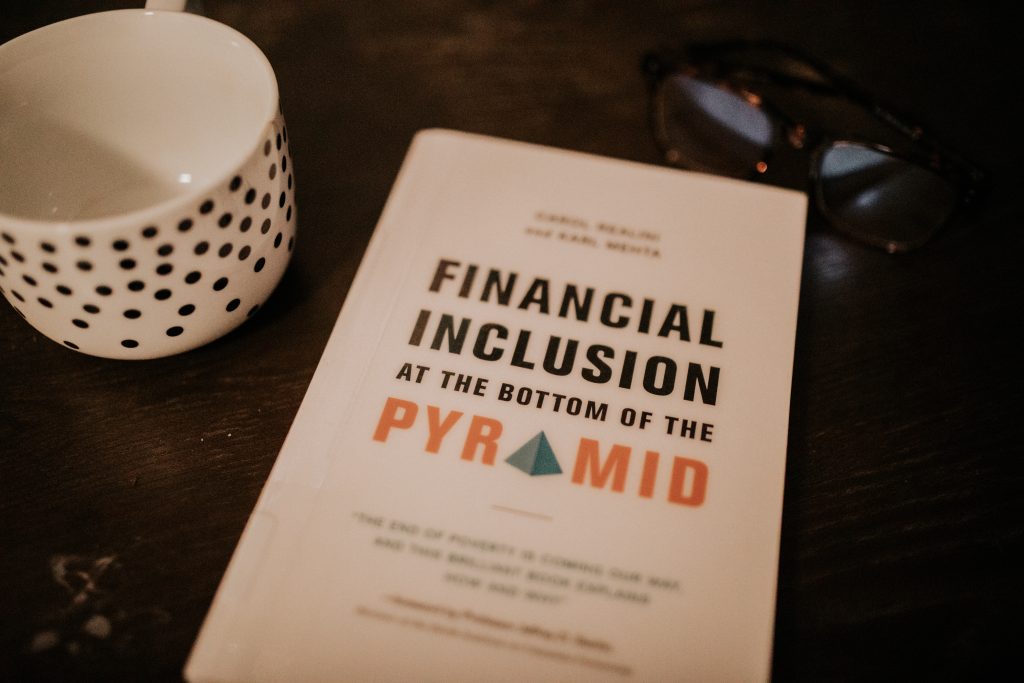Logging into the U.S. Bank app, viewing my savings and checking accounts, and paying my credit card bill takes just seconds. I have access to an entire host of digital financial services just through my phone.
However, this isn’t the case for 2.5 billion people around the world. About a third of the world population are “financial nomads,” living without access to financial services.
Last semester, I took an economics class about information and communications technology, and I was intrigued by what we learned about the unbanked and financial exclusion. To learn more, I recently read Financial Inclusion at the Bottom of the Pyramid by Carol Realini and Karl Mehta. With research and case studies, this book explains why such a large segment of the world population lives outside of the traditional finance system, and why access to financial services is crucial to alleviating poverty in developing countries.
Below are my five main takeaways from Financial Inclusion at the Bottom of the Pyramid.
Traditional banks are not the (only) answer
Many people in the developed world don’t have access to international banks, and if they do, they are subject to different fees and processes than American customers as a result of different regulations and consumer protections. While traditional companies like MasterCard have moved into financial inclusion, these services are largely out of reach of the financial poor. Without a bank account and credit, one faces high barriers to using and transferring their money on a daily basis.
National identity systems are critical to expanding financial services
To get a bank account or to access financial services, one must be able to prove their identity in accordance with “Know Your Customer” (KYC) policies. However, in countries without a standardized national identity system, it can be difficult to obtain the correct documents to verify one’s identity in order to access financial services. Furthermore, KYC costs a bank or financial services provider time and labor. A standardized national identity system streamlines this process and allows the economically poor to access basic services and facilities.
Success is dependent on context
Through case studies of financial services providers in Asia, Africa and Latin America, Financial Inclusion at the Bottom of the Pyramid demonstrates different models of bringing financial access to those at the bottom of the economic pyramid. While mobile payment systems have been successful in countries like India and Kenya, a network of local shopowners providing banking services has been an effective model in Peru. Successful approaches to financial exclusion always consider cultural context and innovate accordingly.
Affordability, accessibility, and availability
These are the three main reasons that the unbanked don’t have a bank account. First, fees and KYC policies mean that just having a bank account is expensive and burdensome. Second, traditional banks are inaccessible, often located in urban centers that are physically distant from the rural poor. Lastly, bank hours and locations make them unavailable to those who work during the day or cannot travel to use their bank regularly.
Mobile phones are an important part of the solution
In Kenya, M-Pesa allows users to deposit and transfer money using their cellphones and SMS technology. In Bangladesh, a bKash user’s cell phone number acts as their mobile wallet number. In India, Eko allows migrant workers to send money to their families using their cell phones. These examples and others demonstrate how mobile phones and similar technology can be leveraged to increase access to financial services.
*****
If you’re interested in learning more, I recommend getting your hands on a copy of Financial Inclusion at the Bottom of the Pyramid.
Financial inclusion is important in the developing world, but also in the United States. This article describes efforts in New York to expand access to banking services and credit. Another resource is Opportunity International, a U.S.-based nonprofit dedicated to microfinance, insurance, and related work in financial inclusion and entrepreneurship.
I’m excited to learn more about financial inclusion and its role in poverty alleviation! Stay tuned for more on this topic soon.

- College Football, Ariana Grande, and Water - September 3, 2023
- Livestock and Land Use: How Are We Feeding The Planet? Impactfull April 2022 - April 19, 2022
- What Does Voluntourism Look Like? A Case Study in a Cambodian Orphanage - March 28, 2022

Pingback: What I'm Reading - Novel Hand